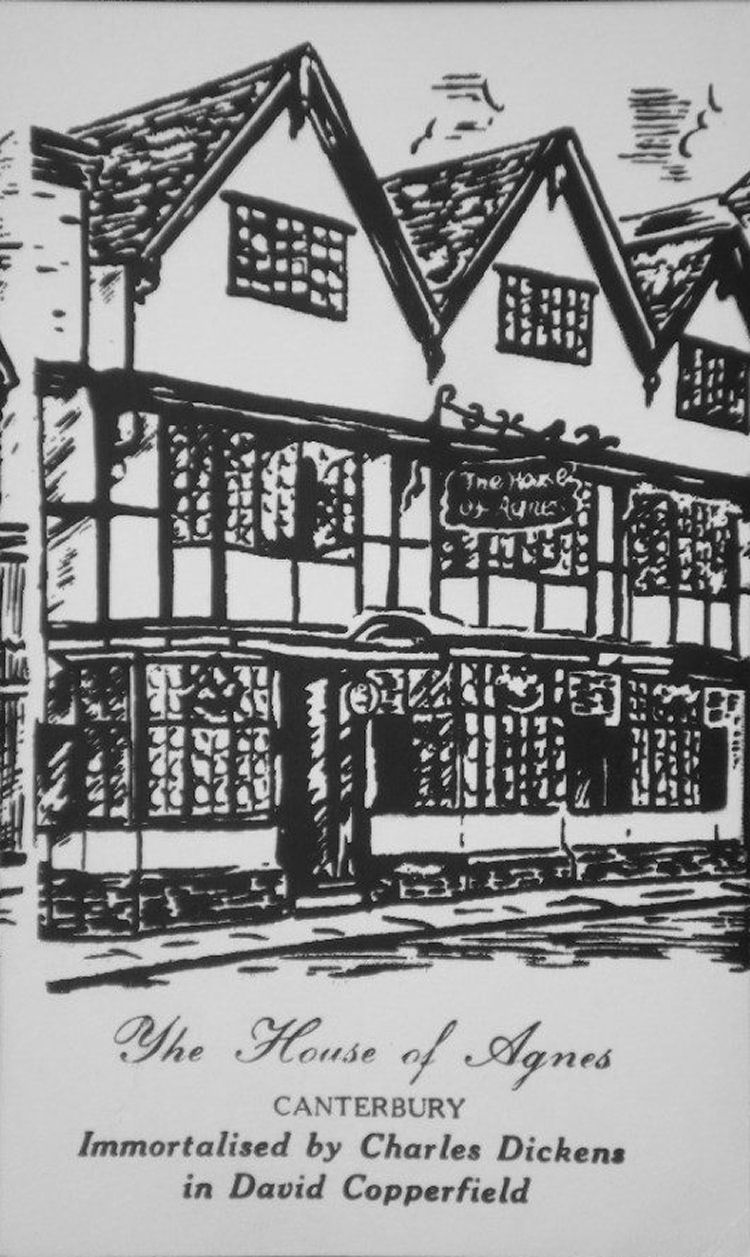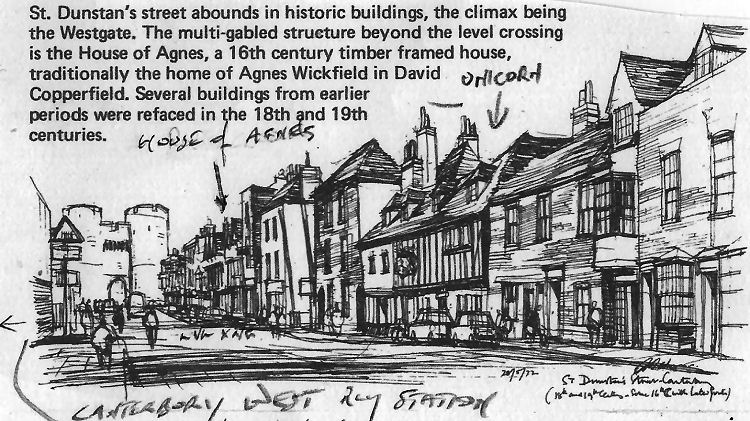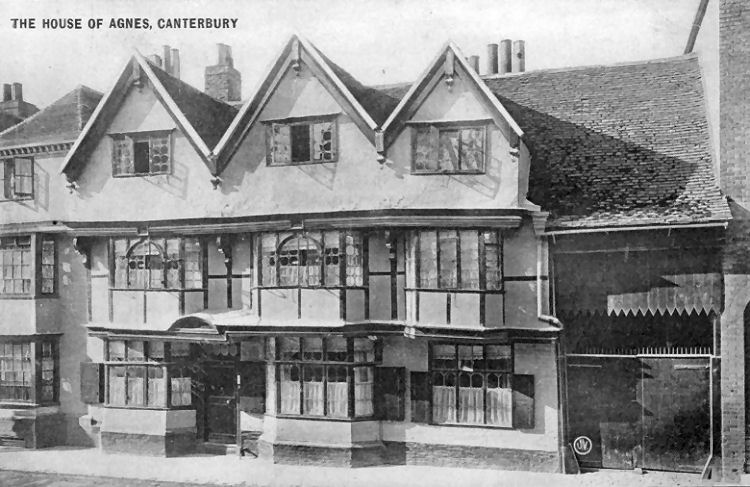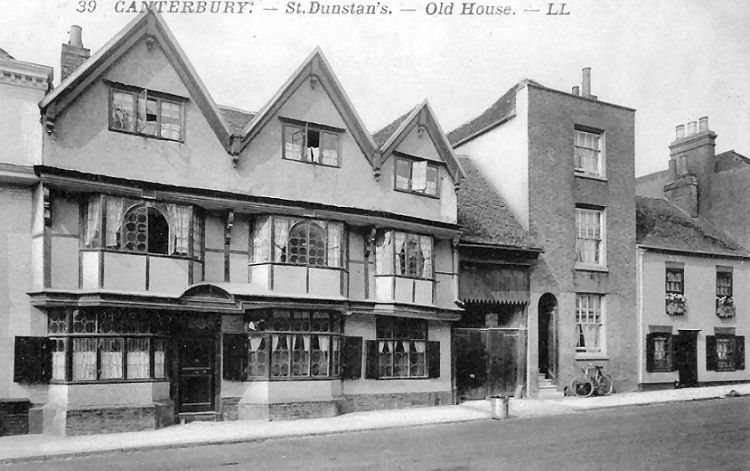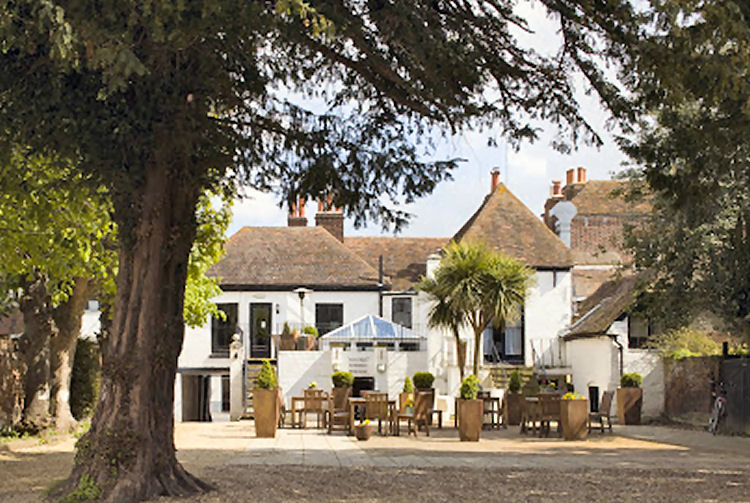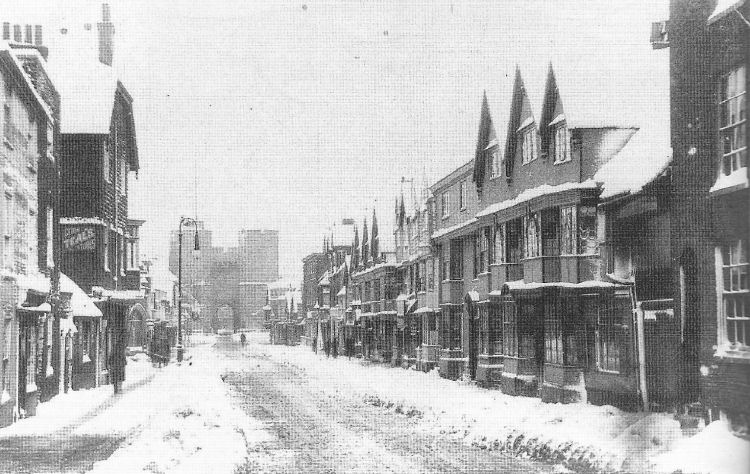 This fascinating wintry picture of St Dunstan's Street was taken before
the First World War from the railway crossing and looks towards the Westgate
Towers.
Many surviving late medieval timber framed buildings can be seen along
the street's south side in both the old and current photographs. Nearest the
camera on the right is the triple gabled "House of Agnes," which is thought
to be the one described by Charles Dickens, in ‘David Copperfield', as
belonging to Mr Wickfield. By the late 1930s it had become a cafe run by
Mesdames Wells, Smith and Williams.
Further down on the same side, and opposite the junction with Station
Road West, can be found another medieval triple gabled building, which had
at one time been the "Star Inn." By the time the old picture was taken the
inn had long gone, and the building divided into three parts as Nos. 77 to
79 St Dunstan's Street. By the late 1930s it was still three separate parts;
a private dwelling, a grocer's and draper's shop respectively.
A number of buildings on the other side of St Dunstan's Street were
destroyed in the blitz of Canterbury, including some that can be seen on the
left of the old photograph. The south side received considerable blast
damage, particularly the former "Star Inn," but fortunately was not beyond
repair and restoration.
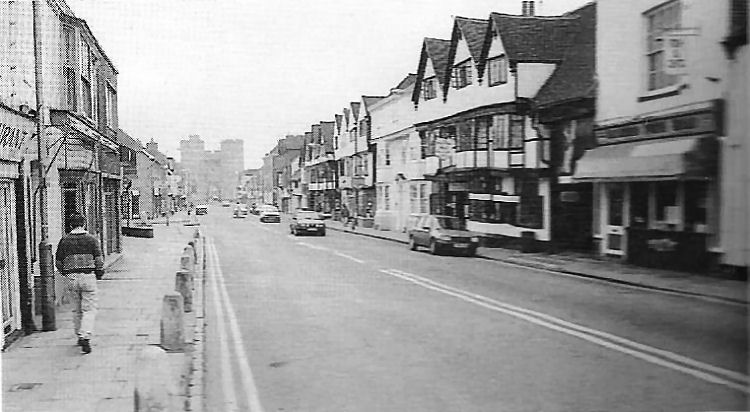
Today, the south side of St Dunstan's Street has altered little since the
early years of this century, and only the occupants have changed. The "House
of Agnes" is now a restaurant and hotel, and two thirds of the old "Star
Inn" have been reunited as a hospice shop. The other third has become an
extension for the "Rose and Crown" public house next door.
|
